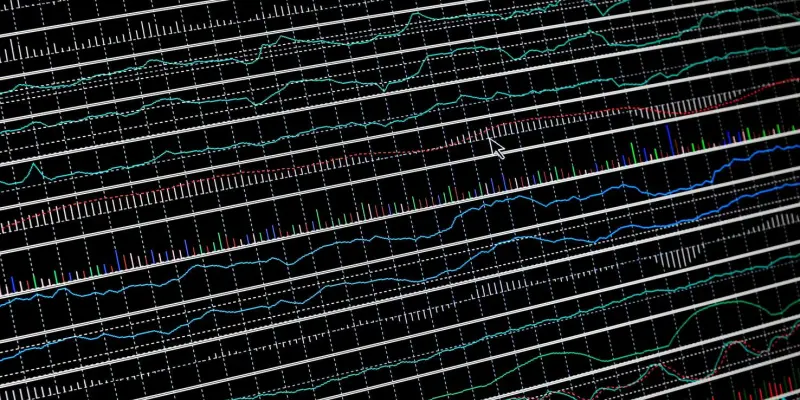The dynamic and ever-growing landscape of digital environments, encompassing hybrid and multi-cloud infrastructures, poses significant cybersecurity challenges for modern enterprises. As organizations intertwine on-premises data centers with services like AWS, Azure, and Google Cloud, the complexity of maintaining robust security escalates. Traditional security measures often fall short in addressing these complexities, necessitating the development and adoption of more advanced, nuanced solutions to maintain a secure operational environment.
Complexity of Modern Digital Environments
The adoption of hybrid and multi-cloud environments necessitates managing a diverse array of APIs, ephemeral containers, and third-party integrations. This complexity leads to a security visibility crisis as traditional tools struggle to provide comprehensive and real-time insights into these sprawling landscapes. Enterprises today rely on a combination of cloud services and on-premises infrastructures, each with unique security requirements and vulnerabilities, creating a tangled web of potential entry points for cyber threats that are difficult to monitor and secure. Despite their prevalence, legacy Network Detection and Response (NDR) tools and Cloud-Native Application Protection Platforms (CNAPPs) have notable limitations. NDR tools, with their dependency on analyzing perimeter traffic, and CNAPPs, focused mostly on posture and configuration, often miss critical real-time activities that signify ongoing attacks. The sheer volume and speed of data generated in these environments can overwhelm traditional tools, leading to missed threats and false positives that burden security operations centers (SOCs) with unmanageable alert volumes, hampering their ability to respond effectively to genuine threats.
Introduction of AI-Powered Security Graphs
AI-powered security graphs represent a groundbreaking advancement in cybersecurity. These graphs dynamically model an organization’s entire digital infrastructure, identifying every workload, resource, and connection. The application of AI to analyze these models can detect complex threat patterns such as lateral movements and illicit communications. Through continuous learning, AI algorithms can adapt to new threats, providing a dynamic and proactive defense mechanism that evolves with the threat landscape. Noteworthy industry experts, including Jon Oltsik from SiliconANGLE and Mario Espinoza from Illumio, highlight the necessity of real-time visibility and contextual understanding of assets for effective threat detection. According to these experts, the ability to map out an organization’s infrastructure comprehensively and understand the context of each asset is crucial. Espinoza points out that detecting breaches alone is inadequate; understanding the attack’s nature and implications is vital. This holistic approach enables security teams to prioritize their responses and focus on threats that pose the greatest risk to the organization.
Case Study: Illumio Insights
Illumio Insights exemplifies the successful implementation of AI security graphs. Unlike conventional tools, it can analyze vast amounts of data in real-time without the need for invasive infrastructure changes. This capability allows for precise identification of breach effects, high-value targets, and obscure threats. The ability to ingest and process billions of data flows instantaneously sets Illumio Insights apart, making it a powerful tool for organizations looking to enhance their security posture without disrupting their existing operations.
One of the transformative features of Illumio Insights is its integration with Illumio Segmentation. This feature enables security teams to quarantine compromised systems precisely, mitigating operational disruptions and isolating threats by limiting risky communication paths. By dynamically adjusting security measures in response to detected threats, Illumio Insights ensures that containment efforts are both effective and minimally disruptive, maintaining business continuity while safeguarding critical assets.
Flexibility and Future Integration
Illumio Insights provides significant flexibility, allowing organizations to adopt a read-only mode for initial observability and eventually transition to active enforcement. This capability enhances overall security effectiveness by minimizing alert fatigue and delivering actionable insights. The platform is designed to be adaptable, helping organizations scale their security measures in accordance with their specific needs and maturity levels, ensuring a tailored approach that maximizes the efficacy of their cybersecurity efforts.
Looking ahead, Illumio aims to integrate its Insights platform with other security graphs like those from Microsoft and CrowdStrike. This strategy promises to deepen context and automation, leading to a synchronized, intelligent defense mechanism against cyber adversaries. By leveraging a federated network of security graphs, organizations can benefit from a more comprehensive understanding of their threat landscape, facilitating quicker and more accurate responses to evolving cyber threats. This collaborative approach heralds a future where cybersecurity becomes more cohesive and intelligent, enabling organizations to stay one step ahead of intruders.
Holistic Approach and Future Trends
The integration of AI-powered security graphs is indicative of broader trends in the evolution of cybersecurity. There is a notable shift towards adopting integrated security solutions that provide comprehensive visibility and contextual understanding. The reliance on AI to interpret and analyze complex data patterns resonates with the growing recognition that traditional tools are no longer sufficient in combating sophisticated cyber threats. This shift from isolated, reactive measures to holistic, proactive strategies is increasingly prevalent. Modern cybersecurity platforms like Illumio Insights focus on understanding threats comprehensively, enabling organizations to not only detect and respond to threats but also to anticipate and mitigate risks before they materialize. This proactive stance translates into more resilient security postures, reducing the reliance on reactive incident response and emphasizing the importance of preemptive action.
Conclusion
In the ever-evolving realm of digital environments, hybrid and multi-cloud infrastructures present modern enterprises with substantial cybersecurity challenges. As organizations integrate on-premises data centers with cloud services like AWS, Azure, and Google Cloud, maintaining a robust security framework becomes increasingly complex. Traditional security solutions often prove inadequate in handling these intricate setups, necessitating the creation and implementation of more sophisticated, nuanced strategies to ensure a secure operational environment. Enterprises must now focus on developing adaptable security measures and leveraging advanced technologies to counteract potential threats more effectively. This shift in approach is crucial for safeguarding sensitive data and maintaining the integrity of information systems. As cyber threats become more sophisticated, the need for innovative, comprehensive security solutions grows, compelling organizations to stay ahead of potential vulnerabilities. Consequently, adopting cutting-edge methodologies and continuously evolving security practices is imperative for organizations aiming to thrive in this dynamic landscape.

